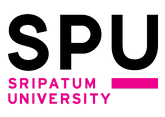Please use this identifier to cite or link to this item:
http://dspace.spu.ac.th/handle/123456789/816Full metadata record
| DC Field | Value | Language |
|---|---|---|
| dc.contributor.author | Keerati Chayakulkheeree | - |
| dc.date.accessioned | 2551-02-22T07:16:33Z | - |
| dc.date.available | 2551-02-22T07:16:33Z | - |
| dc.date.issued | 2007-10-25 | - |
| dc.identifier.uri | http://dspace.spu.ac.th/handle/123456789/816 | - |
| dc.description.abstract | This paper presents the mathematical model and test example of distributed slack bus power flow (DSPF) program. The method can diversify the power imbalance to voltage controlled buses in the system via participation factor. Therefore, the automatic generation controls (AGC) of the generators can be incorporated in this power flow model. The DSPF is tested with the IEEE 30 bus system. Numerical results shown that the method can effectively represent the generation control characteristics to the power flow model and potentially be applied to the overcoming competitive electricity supply industry. | en_US |
| dc.description.sponsorship | Sripatum University | en_US |
| dc.language.iso | en_US | en_US |
| dc.publisher | The 30th Electrical Engineering Conference | en_US |
| dc.relation.ispartofseries | PW033 | en_US |
| dc.subject | Electricity Supply Industry | en_US |
| dc.subject | Automatic Generation Control | en_US |
| dc.title | Distributed Slack Bus Power Flow Part I: Mathematical Model and Framework | en_US |
| dc.type | Article | en_US |
| Appears in Collections: | บทความวิชาการ | |
Files in This Item:
| File | Description | Size | Format | |
|---|---|---|---|---|
| EECON30 PW33.pdf | 791.32 kB | Adobe PDF | View/Open |
Items in DSpace are protected by copyright, with all rights reserved, unless otherwise indicated.
